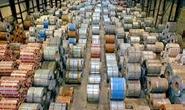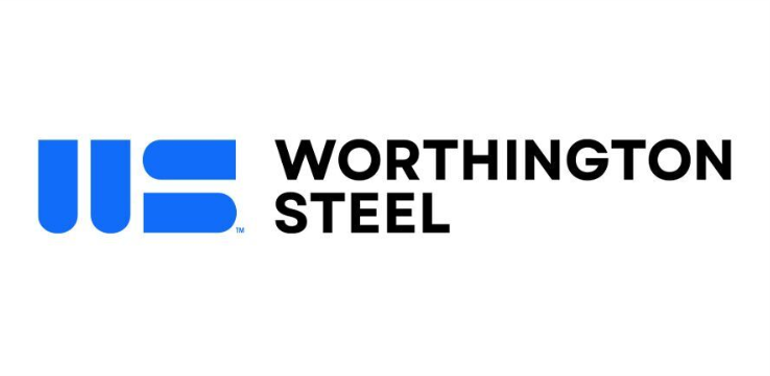Service Centers

Secondary Service Centers Report a Squeeze in the Non-Prime Markets
Written by John Packard
September 13, 2015
SMU has been canvassing secondary flat rolled steel service centers and brokers around the United States to see how the secondary markets are faring in the current market conditions. We had an extended conversation with a Chicago based distributor who told us that the current market is all about “staying power.”
What this executive meant was with the long sustained decline in flat rolled steel prices in both prime and secondary, service centers have been losing money on almost every load they have been shipping out the door. This is due to buying steel at “X” price and a few weeks later that same steel is now worth “X minus” the original number. This devalues their inventory and the only choice they have is to move off the higher priced inventory at whatever price they can get for it. We were told, “Inventory values keep going down and I have to sell into that.”
SMU was told that the secondary service centers are “usually are able to sell ourselves out of these cycles.”
However, there is a tremendous amount of financial strain involved in the process.
“During the first half of the year we all bought high-priced inventory. Now we have two options: sit on the inventory and wait out the market or, buy lower priced steel and average down your inventory and you need a large bucket of money to do that,” he said.
“Can I buy steel the old fashion way and make money? The answer is yes. The issue is about credit stretch.” Credit stretch being defined as the ability to borrow against inventories that are losing value.
He also reported the domestic mills as difficult, holding secondary inventories because buyers are not willing to pay the prices being asked. Combine that with secondary service centers, without buckets of money, who are slowing down their payments in order to generate cash flow which the mills respond to by cutting back credit lines, further squeezing a service center’s ability to buy and sell their way out of the cycle.
Another issue the secondary steel service centers have is the short lead times at the domestic steel mills on prime products. Prime spot prices are in decline and the other service centers can get material sometimes as soon as one week. This squeezes the secondary service centers that do not necessarily have a large price advantage, especially if they are working off old higher-priced inventories.
The service centers we spoke with then add another fly to the ointment–new advanced high strength steels (AHSS) that are being made for automotive and have very limited uses to buyers outside of the automotive market. SMU was told that with more and more of these kinds of steels being rolled, there is less “good” secondary available. Although with demand down, there is still plenty of steel in inventory (it’s just losing value). There is an expectation that this will change, the question is when.
One of the secondary service centers told us that the result is “application obstacles” where there are no customers interested in buying the product. “The industry is working against itself by way over-engineering [the new AHSS steels].”
One of the secondary distributor executives told us that there is a large market of non-prime buyers who expect recourse should the steel not work in the application. “We are a non-prime distributor, not a prime distributor, if anything goes wrong they want to give the steel back.” He went on to say, “There are fewer and fewer targets to aim at for non-prime steel that don’t end up becoming a critical headache.”
We heard from a large service center, “Experiencing a similar level of softness as prime market. CQ up to less than 85Rb HSLA moves (5” or wider), but pricing is under pressure. Very few, if any, secondary buyers are taking risks on material they don’t have a home for, and virtually no one has an appetite for high carbon or exotic grades (too much gravy available).” They went on to say, “This [AHSS] continues to be a problem area. We have had pockets of success, but anything over 85Rb is a challenge. From what I have been able to gather, majority of end users of secondary steel have not upgraded tooling, roll formers, tube mills, etc. to handle the harder steels. Additionally, in this market with an abundance CQ to Grade 50 flooding the market (mill excess lists, imports, slabs, etc.), there is no incentive for them to push the envelope.”
A secondary distributor located in the South echoed the sentiments of the Midwest-based service center quoted above, “Pricing for secondary is extremely cheap, particularly with the mills offering out bid lists to anyone who has credit for a truckload of steel, with almost no pricing discipline. The net effect is more downward pricing pressure. Demand is weaker than pricing. The exotic grades have limited applications and comprise an ever-growing percentage of secondary steel available. The flip side is, if you can find a use for the exotics, you can buy them at almost any price. There just are not enough applications for the volume of tonnage being produced.”
The combination of price pressure, fear of rejection and cash flow concerns has caused sluggish warehouse to warehouse sales for “months and months,” according to one of the executives interviewed.
We were told the result of the process is, “the future of the non-prime is beginning to shrink.”

John Packard
Read more from John PackardLatest in Service Centers

GM names Worthington a 2024 Supplier of the Year
This is the Ohio-based steelmaker’s fourth time winning the award.

Olympic taps Hegler for GM role at Action Stainless
Olympic Steel has named Alex Hegler as general manager for its Action Stainless facility in Rock Hill, S.C.

Olympic opens new Houston facility for Action Stainless unit
Olympic Steel has opened a new facility in Houston to support its Action Stainless business.

Worthington Steel sees demand improvement after earnings slump
Lower volumes and steel prices dampened Worthington Steel’s profits, but market momentum is building, the metals processor said in its most recent quarterly earnings report.

Galvanized buyers see strong demand, but uncertainty lingers
Demand is up, but tariffs raise concerns
